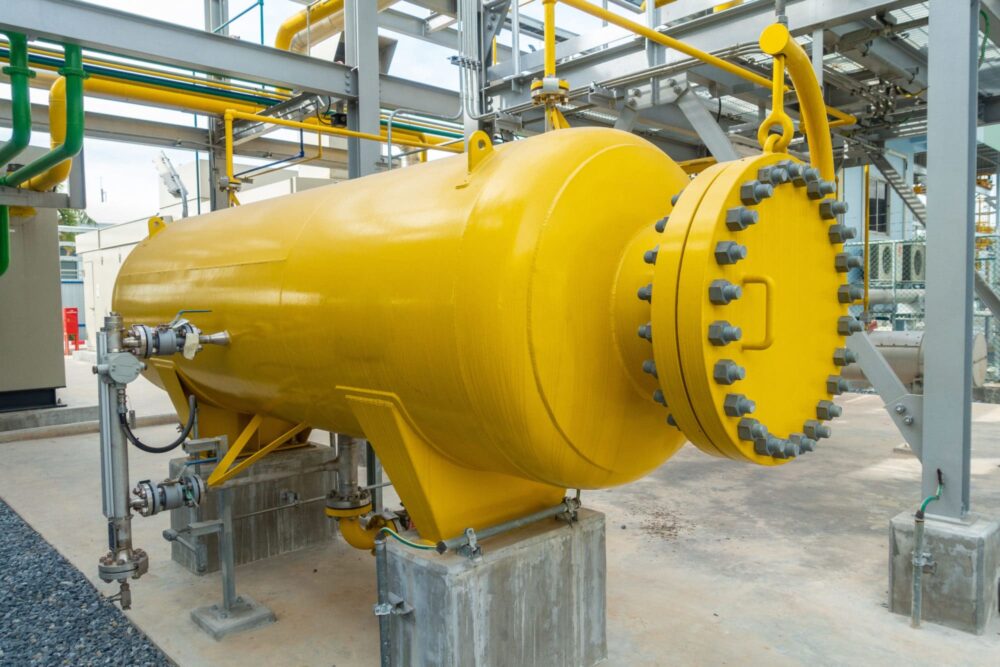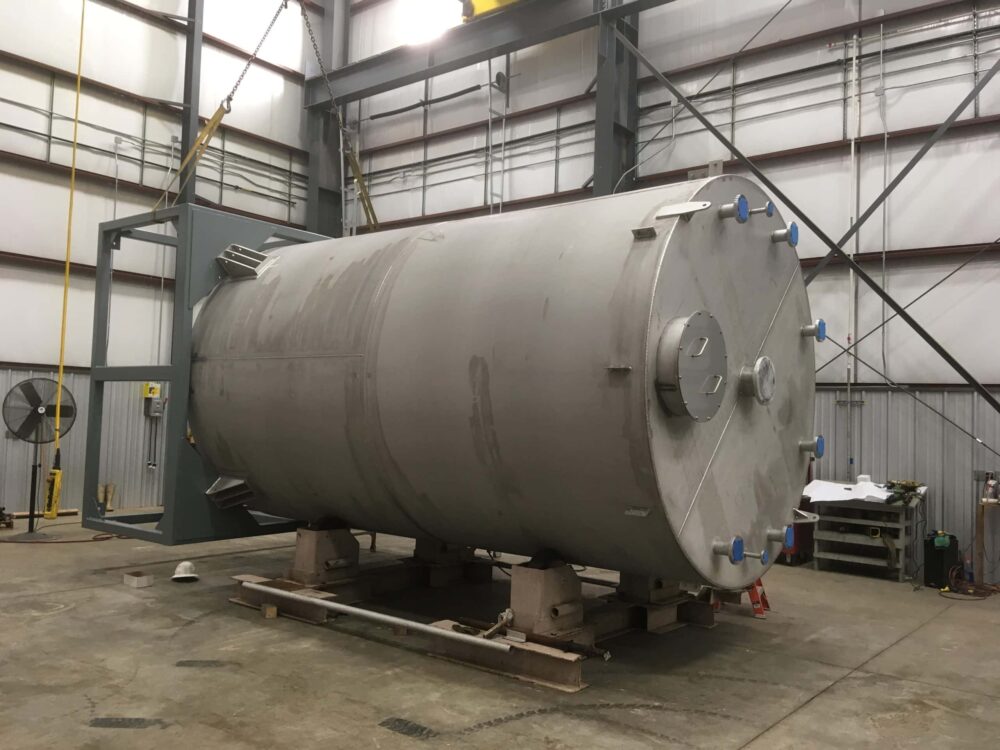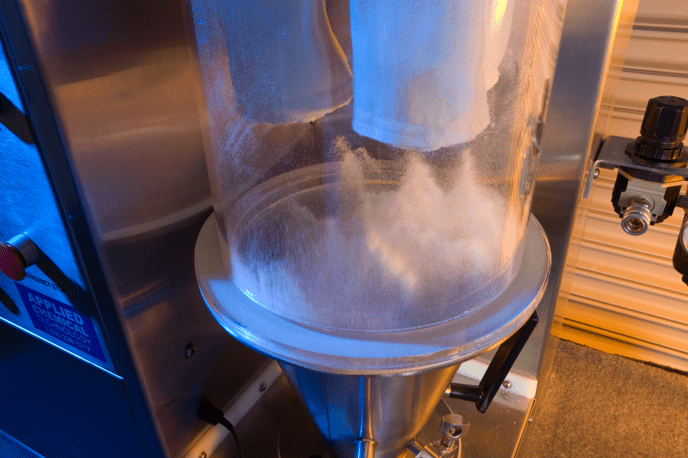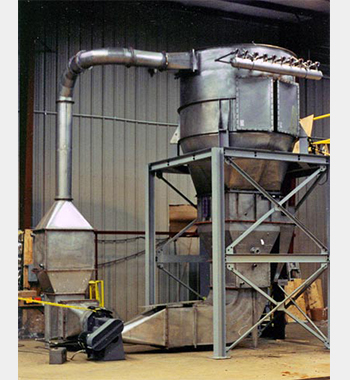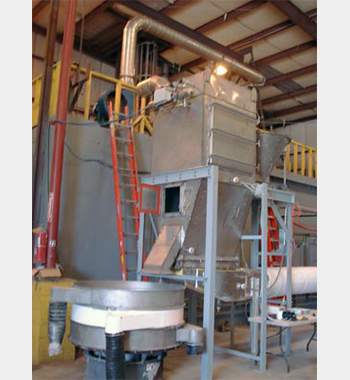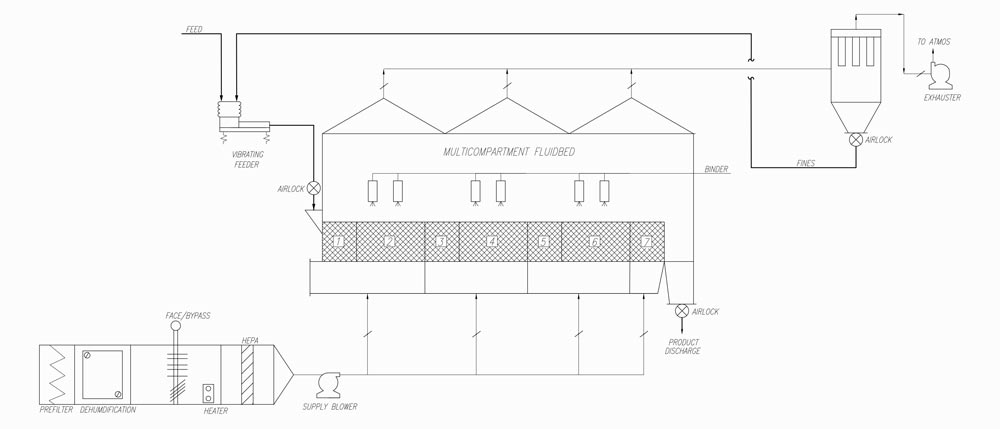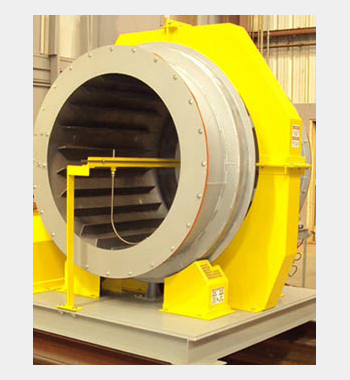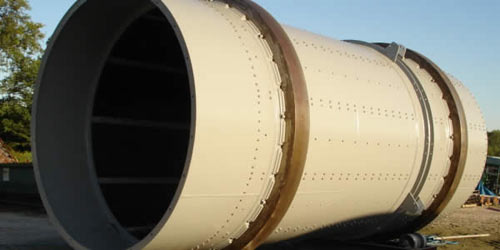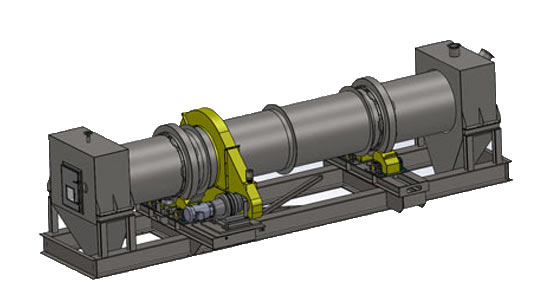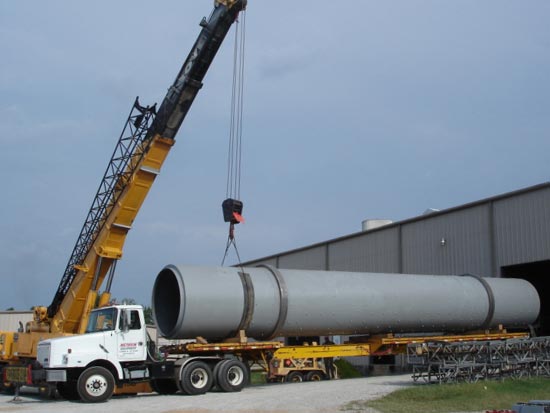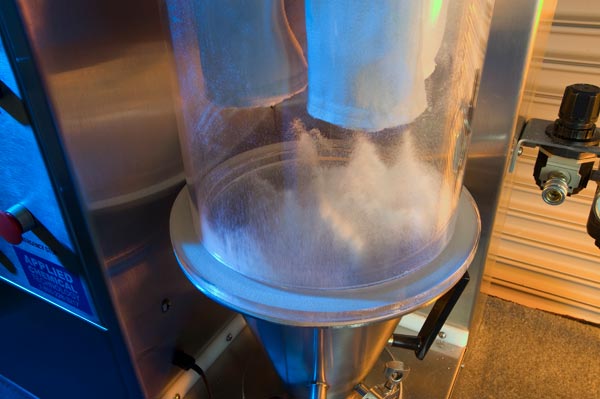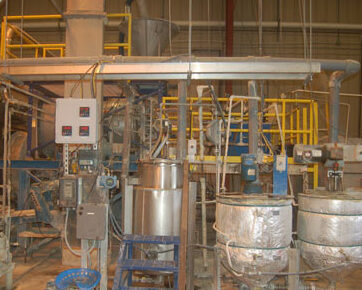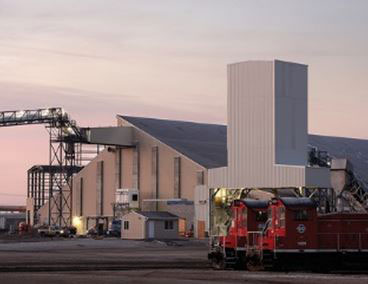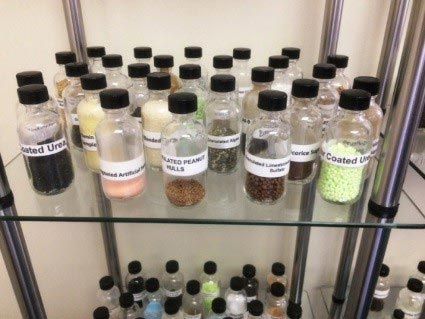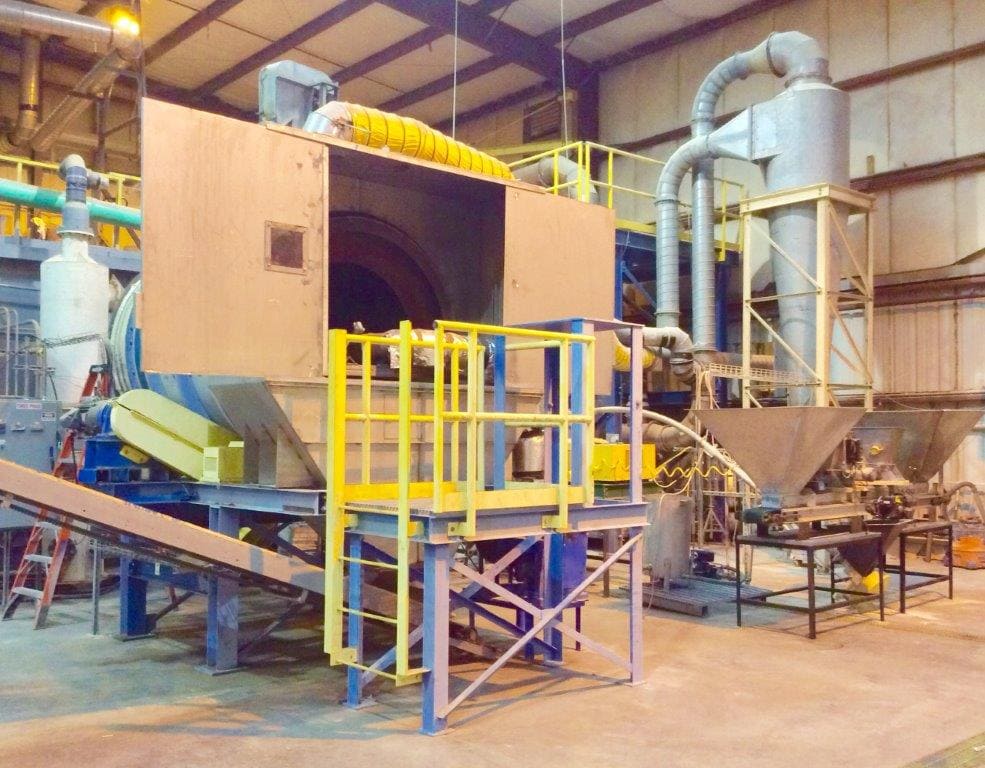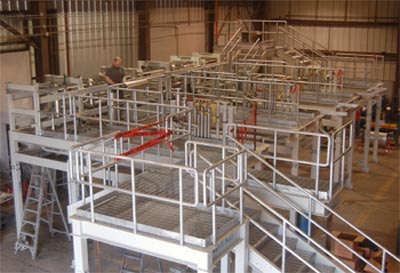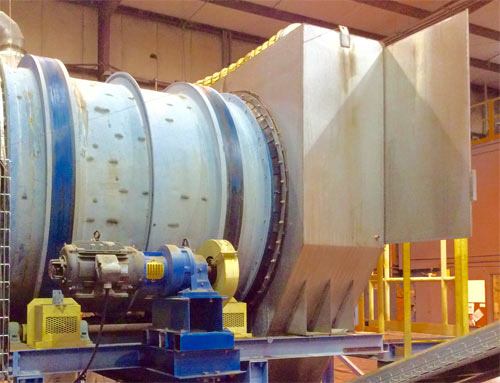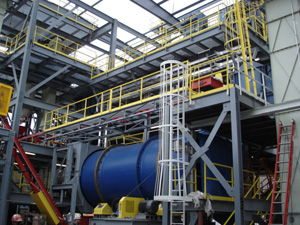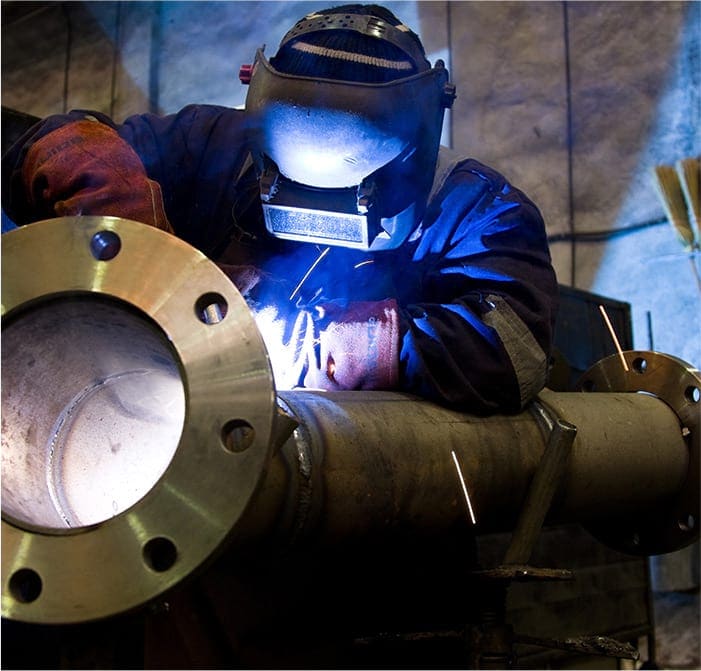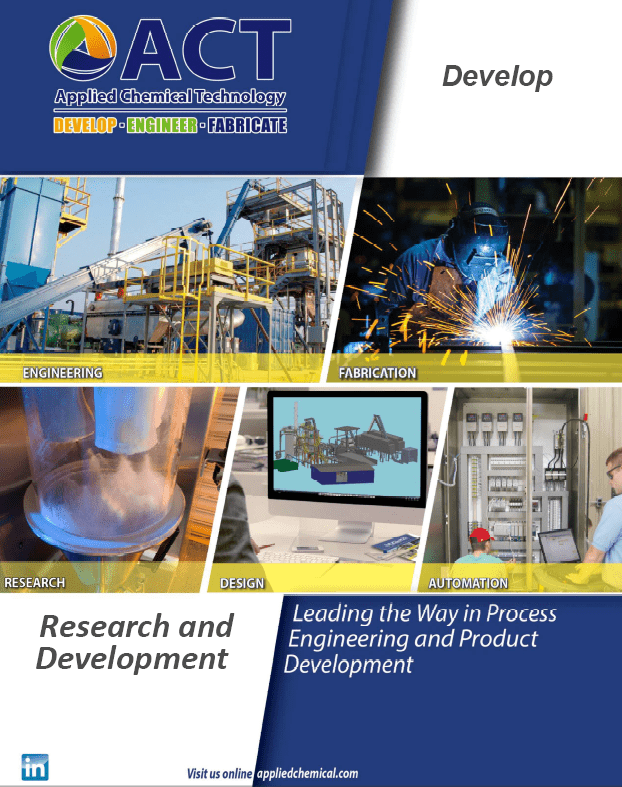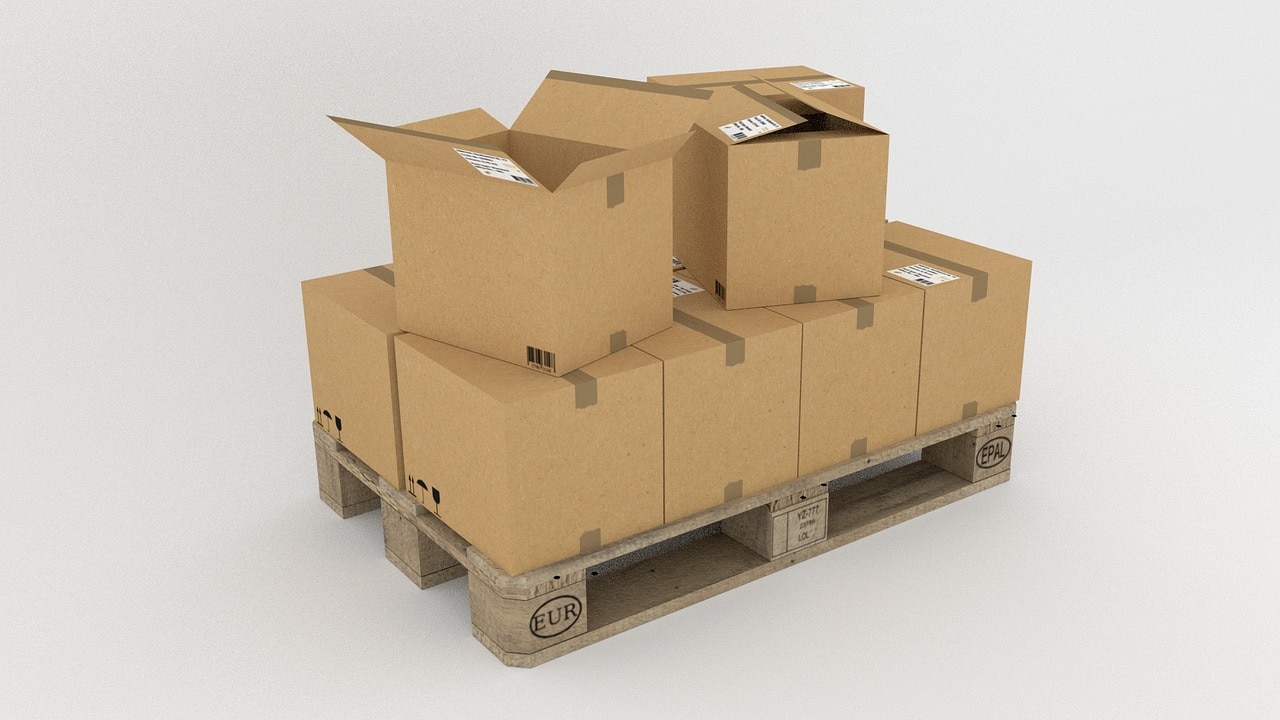Including Direct Air Swept Coolers, Cascading Coolers, and Falling Curtain Coolers
Every Applied Chemical Technology (ACT) rotating convection cooler or direct air swept cooler (including cascading coolers and falling curtain coolers) is backed by a team of engineers, designers, and craftsmen with experience in designing and building industrial equipment and developing processes since our founding in 1981. Over the years, our rotary cooler designs have proven themselves to be a high quality, efficient, and rugged solution for our clients’ thermal processing systems.
Capacities: 50 lb/hr to 200 tons/hr
Diameters: Up to 14 feet
Lengths: Up to 60 feet (single section), 150 feet (multiple sections)
Shell Thicknesses: Up to 1 ½”

Typical Materials Cooled in an ACT Rotary Cooler
- Fertilizers
- Aggregates
- Biomass – Wood Chips, Energy Crops, and Other Materials
- Minerals – Sands, Clays, and Other Minerals
- Sewage Sludge
- Animal Feeds – Cereal Grains, High Protein, Wastes, and By-Products
- Foods – Cereals, Fruits and Vegetables, Starches, and more
- Plastics – Pellets, Resin, PET, Waste
- Powders – Catalysts, Chemicals, Pigments, and more
- Metal Scraps
ACT Rotary Cooler Internals and Cooling Drum Systems
Our engineers can help you identify the best drum internals for your convective cooler based on your material properties and processing goals. In a cascading cooler or direct air swept cooler, these internals are designed to lift the material and cascade it through a stream of cool air that is provided as a counter-current flow to the material flow through the drum. By cascading the material through the air stream, improved efficiency in heat transfer is achieved.
ACT fabricates the ultimate in rotary convection coolers, the falling curtain cooler. In the falling curtain rotary cooler, the material is lifted and then falls from a pan inside the drum in such a way that a curtain of the falling material is formed. The cooling air in the drum is supplied in ducts that blow the air perpendicularly through the curtain of material resulting in a highly efficient transfer of heat by increased convection.
The air supplied to cool the material in our drums may be ambient air, chilled air, or conditioned air. In addition to building cooling drums, we also supply complete thermal processing solutions that can include air handling, heat exchangers, material sizing and recycle, and product handling.






